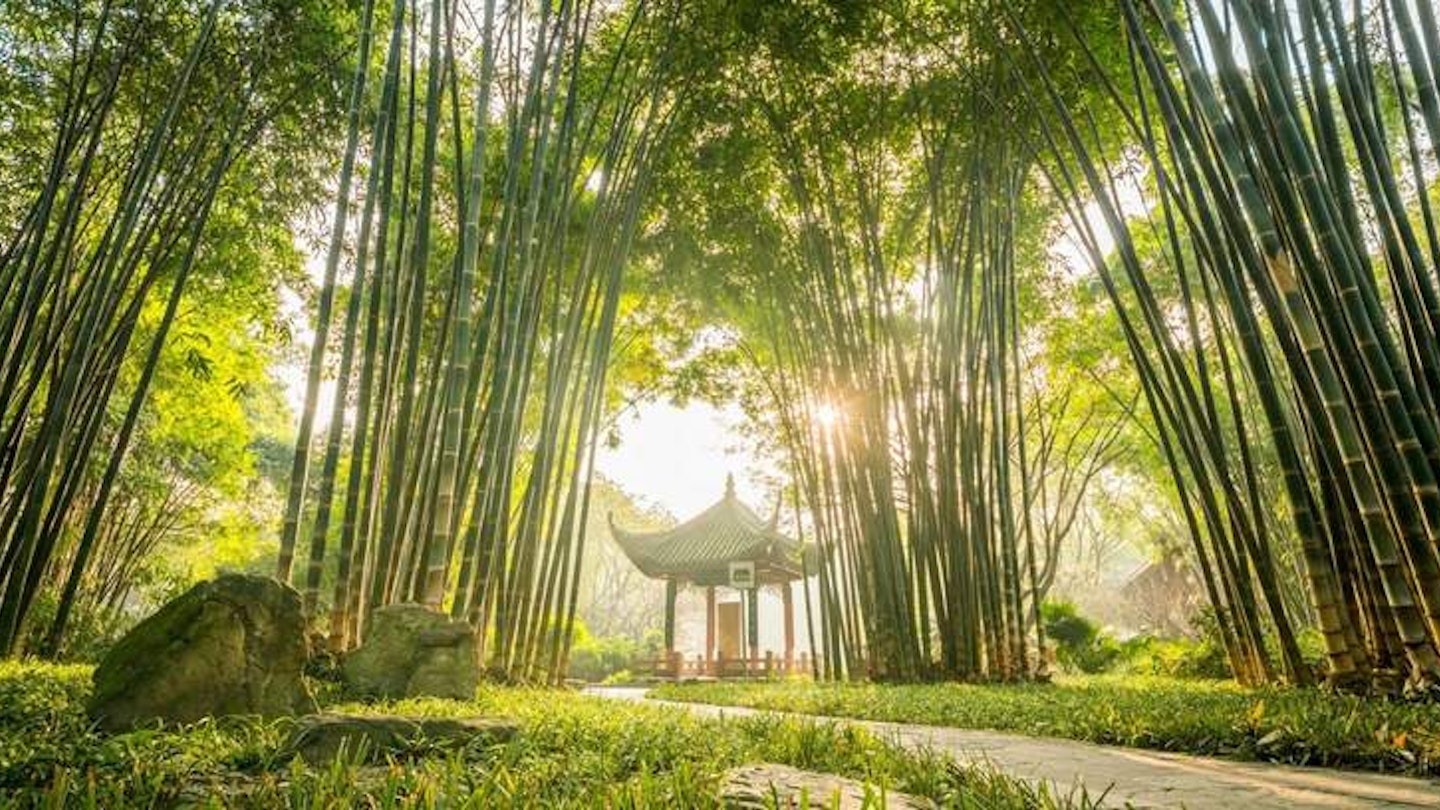Discovering Chengdu’s Green Spaces and Mount Gongga
With a nickname as evocative as “The Garden City at the Foot of the Snow Mountains,” it’s no surprise that Chengdu features numerous parks and gardens, each more beautiful than the last. Elegantly landscaped green spaces throughout the city provide tranquil oases for sports, leisure, and relaxation.
Here are some of Chengdu’s prettiest green spaces, from popular parks to hidden gem gardens, along with practical tips for visiting the city’s famed snow mountains.
People’s Park
Lying at the heart of the city and with its own metro station, People’s Park stands out as Chengdu’s most accessible green space. It was the city’s first public park when it opened in 1911 and remains an important hub for cultural, social, and recreational activities. Visitors often spend hours watching locals dance, sing, and practice tai chi. The park even boasts a small, willow-tree-lined lake with rowing boats available for hire.
After strolling through the park’s landscaped grounds, several teahouses offer a delightful spot to rest. The charming, century-old He Ming Teahouse is particularly popular among visitors.
Wangjiang Pavilion Park
Nestled along the Jinjiang River, Wangjiang Pavilion Park is home to a lush forest featuring over 150 different types of bamboo. The gently swaying bamboo provides a cooling sanctuary from Chengdu’s summer heat. On the riverbank, the iconic 128-foot high ‘River Watching’ pavilion, erected in 1889, has become a renowned city landmark, celebrated for its exquisite animal and human sculptures.
This park and pavilion were constructed to honor Xue Tao, one of the Tang dynasty’s (618 to 906 A.D.) most illustrious female poets. Despite the challenges of her era, records indicate that Xue Tao authored more than 500 poems, earning admiration from her contemporaries.
The park can be reached from the Line 6 metro station, Sanguantang, situated on the opposite bank of the river.
Du Fu Thatched Cottage
Another park rich in literary history is Du Fu Thatched Cottage, which commemorates the esteemed poet Du Fu. Having resided for much of his life in Chang’an (now known as Xi’an), Du Fu sought refuge in Chengdu in 759 A.D. fleeing violent unrest against the Tang emperors. With assistance from friends, he built the thatched cottage where he lived for four years, creating nearly 250 poems during his stay.
Although the original cottage has been replaced by charming gardens and buildings that reflect Du Fu’s time, the grounds encompass traditional Chinese design, replete with winding streams, carved stone bridges, and meticulously tended plum trees that bloom beautifully in spring.
Huanhuaxi Park
Adjacent to Du Fu’s Thatched Cottage, Huanhuaxi Park is a sizeable green space located between the Qingshui River and Huanhua Brook. The park boasts a series of picturesque paths, winding through sculpture gardens and bamboo thickets, making it a popular haven for runners and cyclists alike.
Tianfu Greenway
The Tianfu Greenway represents an ambitious urban renewal initiative aimed at connecting and enhancing Chengdu’s wetlands, lakes, and woodlands. Nearly 1,900 miles of the proposed 10,501-mile network have been completed. The greenway features walking and cycling paths weaving through some of the city’s most stunning and ecologically significant green areas.
A fantastic way to experience the Tianfu Greenway is to cycle along the 15.5-mile stretch beginning at Jincheng Park (conveniently accessible via the Jincheng Avenue metro station on Line 5). Following your departure from Jincheng Park, the greenway meanders across the Jinjiang River into the enchanting Bailuwan Wetlands—Chengdu’s first urban wetland park. This route further connects to Qinglong Lake pathways in Shiling Forest Park.
The journey passes several expansive lakes surrounded by wetland vegetation, which provide food and shelter for a multitude of bird species. Nature enthusiasts flock to the parks along the greenway to exercise, fly kites, picnic, and engage in birdwatching.
Bamboo Craft Village
A day trip from Chengdu leads to Daoming Town, known as the Bamboo Craft Village, showcasing the age-old art of bamboo weaving amidst extensive forests. Villagers craft various items, including clothing, furniture, and utensils, using the abundant bamboo surrounding their homes. This traditional craft is not merely an industry but a vital link fostering community connections.
Local guides provide insights into this ancient art in the modern visitor center, designed to reflect the region’s traditional rural architecture. Alternatively, visitors can stroll through the surrounding fields to observe daily life in the village.
Visiting Mount Gongga – Chengdu’s Snow Mountain
Standing at nearly 25,000 feet above sea level, Mount Gongga, or Gongga Shan, holds the title of Sichuan province’s highest peak. Its steep, snow-laden slopes present unique challenges, making summiting it more arduous than climbing Mount Everest, notwithstanding its lower elevation. Only a handful of mountaineers have achieved this remarkable feat.
This mountain is rightfully hailed as the King of Sichuan’s mountains. While the summit may be inaccessible, the region around Mount Gongga is breathtaking, warranting a multi-day visit. Several high-altitude trekking routes link local villages, crossing alpine terrains, grasslands, and glaciers. These routes, set at over 9,800 feet, are best undertaken with local guides and drivers due to their demanding nature.
Over 70 glaciers flow from Mount Gongga, with the most accessible found in Hailuogou Glacier Park, located at the mountain’s base. Photographers are drawn to the shores of Lenggacuo Lake to capture stunning reflections of Mount Gongga during the early morning and evening hours.
Mount Gongga is situated in the Garze Tibetan Autonomous Prefecture, approximately 180 miles southwest of Chengdu. Visitors can reach Chengdu via the city’s two airports: the newly opened Chengdu Tianfu International Airport and Chengdu Shuangliu International Airport. Coaches depart daily from Chengdu’s Xinnanmen bus station, providing direct transportation to Hailuogou Glacier Park, with journeys taking six to seven hours.





